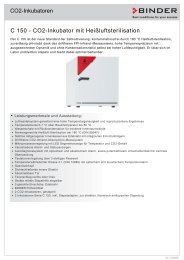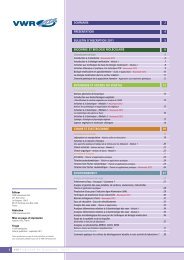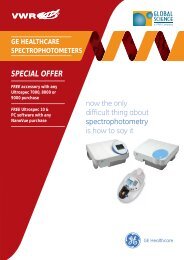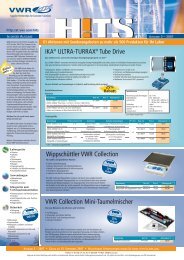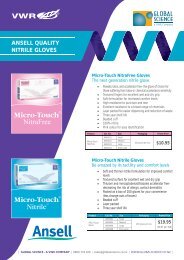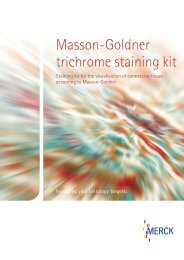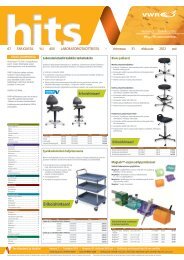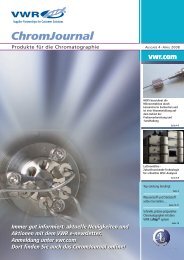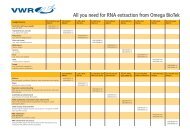You also want an ePaper? Increase the reach of your titles
YUMPU automatically turns print PDFs into web optimized ePapers that Google loves.
ChromJournalInnoVAtIVe pRoducts foR chRomAtoGRAphylevelled preventative maintenanceschedules – the 80/20 ruleWhen dealingwith HPLC systemmaintenance, the80/20 rule appliesmore often than not.Typically, 80% ofsystem problems canbe traced to about20% of the system’scomponents. Similarly,80% of time is oftenspent fixing 20% of theproblems. If Murphy’sLaw is true, it seemsthere is almost a 100%chance that theseproblems will occurat the worst possibletime! So whether akey interface starts toleak or a check valvestarts to stick at themost inopportunemoment, it is goodto develop a regularand well definedseries of preventativemaintenance (PM)procedures to keepHPLC systems runningsmoothly.Why conduct preventativemaintenance?as with any mechanical system, periodic PMprocedures will keep an HPlC instrumentrunning at peak performance. In addition, thesesame PM’s may help prevent secondary ortertiary damage that can result when a particularcomponent fails to do what it is supposed todo. Because of this, many regulatory agenciesoverseeing specific industries require that eachHPlC instrument has its own maintenance logbook as well as a specific PM protocol in place.levelled preventative maintenanceMany HPlC service teams already use standardPM procedures and parts. However, becausemany PM parts tend to require replacement atdifferent intervals, a number of forward thinkingand cost conscious service organisations havebegun to use a type of levelled PM schedule(sometimes defined as basic, advanced, andcomprehensive PM) to reduce costs and savetime to an even greater degree.how to create your ownpreventative maintenance planWith any HPLC or UPLC system, the firstchallenge for most service organisations is toidentify key components that tend to needreplacement – and how regularly. Becausea host of factors will affect this, a goodguide for this process is the HPlC instrumentmanual itself. the experiences of many CtScustomers have been that the replacementschedules specified by the original equipmentmanufacturer (oeM) can be an overkill. So, whilean instrument manufacturer may prescribe acomprehensive PM every 6 to 12 months, serviceorganisations often find that only certain partsneed to be changed at this point, while otherscan be changed every 12 to 24 months or evenevery 24 to 36 months.after years of supplying thousands ofdistribution partners and end users around theglobe, CtS recommends the following steps increating a comprehensive PM plan:• Identify and isolate parts that seem to needreplacement on a less frequent basis than theoeM recommends, typically with input frominternal and external subject matter expertsfamiliar with the instruments and applicationsused within a specific organisation. In addition,instrument specific chat rooms or user groupscan often provide valuable input as well• Test hypotheses by changing out specificparts on a less frequent basis, monitoring keylocations on the instrument and comparingtest results to ensure that performance levelshave not been adversely affected• Document component life and any failure ratesto estimate expected life of specific parts forfuture PM’s• establish new benchmarks for the replacementof specific parts• Develop a two or three tiered PM schedulethat fits the needs of your organisation andbudget• Continue monitoring key components andrefining replacement schedules to better fit theneeds of the organisation being servedWhat parts to replace and whenSome of the items to consider replacing aspart of an HPlC PM program include lamps,plunger seals, and inline filters. Other commonlyreplaced items are check valves, active inletcartridges, needles and needle seats, rotor seals,plungers, and mobile phase filters.18VWR InteRnatIonal I chromJournal Issue 12 I 2012



